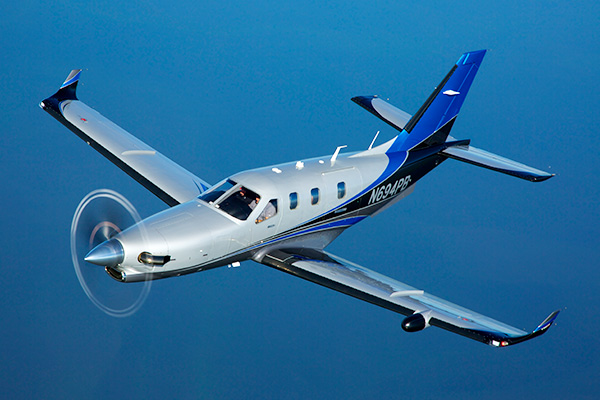
The TBM 900 offers greater speed, range and efficiency than previous TBMs. It has improved short field capabilities and, as a result, can be used on just about all general aviation runways. Approaching at only 90 KIAS or less, short runways or short unpaved surfaces can accommodate the TBM 900. The new 5-blade Hartzell propeller […]

The Hartzell 5-blade propeller accelerates from zero to 90 knots 10 percent quicker than any other available propeller. Hartzell's redesigned propeller also allows for a quicker ascent rate of 100 feet per minute. Cruise is 2 knots quicker than the present four-blade prop and 5 knots faster than the wood-based five-blade propeller alternative. In addition, the new Hartzell five-blade prop is much quieter in the cabin and in the pattern.

The simplfied planum’’s 40% larger intake frees up airflow, giving an 80 hp (60 kW) boost for the same fuel flow and shortening the take-off roll by 20%.

The TBM-900’s exhaust system has been redesigned to be operate more efficiently, maximizing airflow through the engine and improving performance at higher altitudes. Compared to previous TBM models, the redesigned exhaust system in the TBM-900 results in optimized engine airflow, reduced drag. and improved residual thrust.

The TBM's engine is a dependable Pratt & Whitney Canada PT6A engine. Its reliable design provides simple maintenance, efficiency, and low operating costs and has one of the largest support networks available. The PT6A is regarded as one of the most dependable powerplants ever created, based on years of regional airliner and commercial operations with over 43,000 engines (covering over 350 million flying hours).
The PT6A-66D model used on the TBM 900 has a thermodynamic rating of 1,825 horsepower and a flat-rated output of 850 shaft horsepower, making it one of the most powerful PT6A engines ever manufactured.
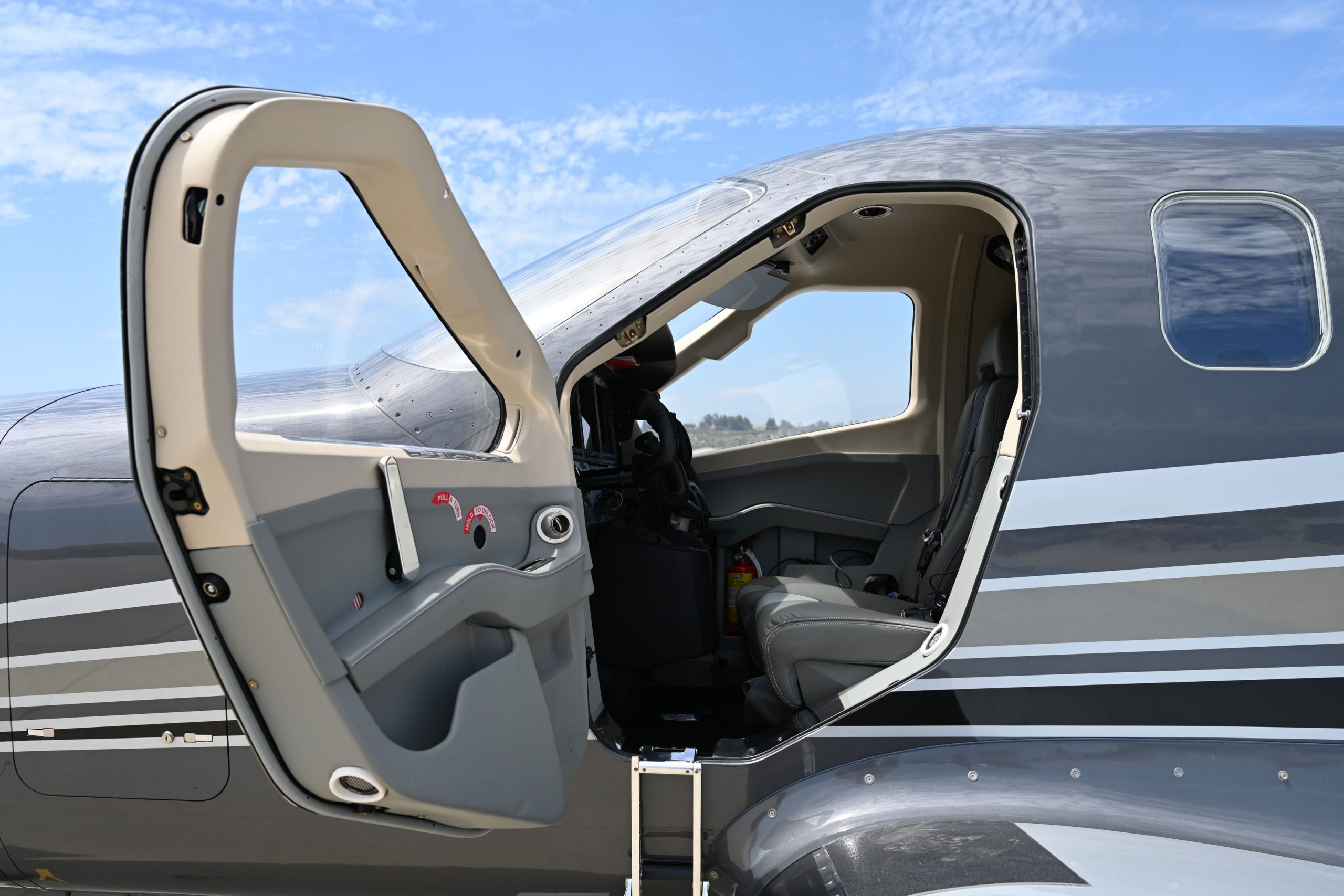
This milled aluminum substructure pilot door simplifies lives by eliminating the need to open and close the huge main passenger door before traveling across the cabin to reach the front seats.

This Doppler-capable weather avoidance tool brings full-color storm cell monitoring to compatible Garmin multifunction displays, combining outstanding range and configurable scanning profiles with precise target definition for accurate, easy-to-interpret weather analysis in the cockpit. With pilot-adjustable horizontal scan angles of up to 120°, you can easily focus scanning on the regions you choose to monitor, while vertical scanning enables you to focus on storm tops, gradients, and cell buildup at various altitudes.

The new wingtips give the TBM 900 a distinct new appearance, and when coupled with aerodynamic improvements to the ailerons, vertical stabilizer, and new inner gear doors, they significantly reduce drag while improving flying performance at low speed and high angle of attack.

Computational Fluid Dynamics (CFD) analysis of the airflow over the previous TBM airframe revealed a significant amount of turbulence in the area of the gear doors. The TBM 900 adds an inner gear door, which reduced turbulence and improves its aerodynamic efficiency.

The TBM 900 tail cone has been redesigned to be more aerodynamic, hence lowering drag and enhancing airframe performance. Socata added an additional light to the tip of the aircraft's tail in order to increase nighttime visibility. This enhances the TBM900's visibility to other aircraft in low-light circumstances by enhancing the illumination around the TBM900.
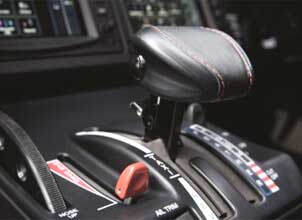
A single, ergonomically designed lever controls engine power, propeller and engine condition. In addition, its new backlit power center allows the TBM930 to start almost twice fast as its predecessors and automatic starter cutoff which reduces pilot workload during the startup sequence.

Large, high-resolution screens offer flight instrumentation, navigation, weather (GWX70 Doppler radar), terrain, traffic, and engine data on the G1000 flight deck, including the GFC 700 autopilot. The GFC 700 is able to utilize all available G1000 data for navigation, including the capacity to retain airspeed references and maximize performance over the whole velocity envelope.
Also included is Garmin's SVT (Synthetic Vision Technology) which recreates a 3-D "virtual reality" landscape on the pilot and copilot flight displays. This considerably increases the pilot's situational awareness in mountainous terrain and low IFR conditions.

The Hartzell 5-blade propeller accelerates from zero to 90 knots 10 percent quicker than any other available propeller. Hartzell's redesigned propeller also allows for a quicker ascent rate of 100 feet per minute. Cruise is 2 knots quicker than the present four-blade prop and 5 knots faster than the wood-based five-blade propeller alternative. In addition, the new Hartzell five-blade prop is much quieter in the cabin and in the pattern.
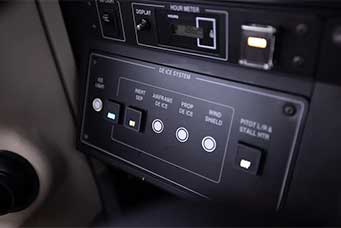
The In-Flight Ice Detection Advisory System is a new feature that operates as a backup in the event that the pilot fails to identify icing conditions or ice accretion.
An ice detector based on frequency variations located at the top of the fin triggers the ice protection systems when icing conditions are detected if the pilot fails to identify icing conditions or ice accretion. When activated the system automatically arms the following systems: wings and tailplane pneumatic de-icing boots, propeller and electric de-icing, windshield electric de-icing, inertial particle separator.

The simplfied planum’’s 40% larger intake frees up airflow, giving an 80 hp (60 kW) boost for the same fuel flow and shortening the take-off roll by 20%.

In 2014, the exhaust system of the TBM underwent a redesign in order to operate more efficiently, maximizing airflow through the engine and improving performance at higher altitudes. Compared to previous TBM exhaust systems, the redesigned system in newer TBM models offers optimized engine airflow, reduced drag. and improved residual thrust.

The TBM's engine is a dependable Pratt & Whitney Canada PT6A engine. Its reliable design provides simple maintenance, efficiency, and low operating costs and has one of the largest support networks available. The PT6A is regarded as one of the most dependable powerplants ever created, based on years of regional airliner and commercial operations with over 43,000 engines (covering over 350 million flying hours).
The PT6A-66D model used on the TBM 900 has a thermodynamic rating of 1,825 horsepower and a flat-rated output of 850 shaft horsepower, making it one of the most powerful PT6A engines ever manufactured.

This milled aluminum substructure pilot door simplifies lives by eliminating the need to open and close the huge main passenger door before traveling across the cabin to reach the front seats.

This Doppler-capable weather avoidance tool brings full-color storm cell monitoring to compatible Garmin multifunction displays, combining outstanding range and configurable scanning profiles with precise target definition for accurate, easy-to-interpret weather analysis in the cockpit. With pilot-adjustable horizontal scan angles of up to 120°, you can easily focus scanning on the regions you choose to monitor, while vertical scanning enables you to focus on storm tops, gradients, and cell buildup at various altitudes.

The new wingtips give the TBM 900 a distinct new appearance, and when coupled with aerodynamic improvements to the ailerons, vertical stabilizer, and new inner gear doors, they significantly reduce drag while improving flying performance at low speed and high angle of attack.

Computational Fluid Dynamics (CFD) analysis of the airflow over the previous TBM airframe revealed a significant amount of turbulence in the area of the gear doors. The TBM 900 adds an inner gear door, which reduced turbulence and improves its aerodynamic efficiency.

The TBM 900 tail cone has been redesigned to be more aerodynamic, hence lowering drag and enhancing airframe performance. Socata added an additional light to the tip of the aircraft's tail in order to increase nighttime visibility. This enhances the TBM900's visibility to other aircraft in low-light circumstances by enhancing the illumination around the TBM900.

A single, ergonomically designed lever controls engine power, propeller and engine condition. In addition, its new backlit power center allows the TBM930 to start almost twice fast as its predecessors and automatic starter cutoff which reduces pilot workload during the startup sequence.

The modern version of Garmin’s G1000 avionics system, the G1000 NXi offers pilots a state-of-the art flight display design enhanced by much more powerful processors. This hardware architecture supports faster map rendering and smoother panning throughout the displays, wireless cockpit connectivity )including wireless database updates) using Garmin Fight Stream 510, and map overlays on the Horizontal Situation Indicator giving pilots a wealth of data at their fingertips.
The Garmin G1000 NXi combines high-resolution display design with state-of-the art processors. These improvements provide faster boot up and software loading, while enabling the system to manage more aviation data and maps (such as visual approach plates)

The Hartzell 5-blade propeller accelerates from zero to 90 knots 10 percent quicker than any other available propeller. Hartzell's redesigned propeller also allows for a quicker ascent rate of 100 feet per minute. Cruise is 2 knots quicker than the present four-blade prop and 5 knots faster than the wood-based five-blade propeller alternative. In addition, the new Hartzell five-blade prop is much quieter in the cabin and in the pattern.

The In-Flight Ice Detection Advisory System is a new feature that operates as a backup in the event that the pilot fails to identify icing conditions or ice accretion.
An ice detector based on frequency variations located at the top of the fin triggers the ice protection systems when icing conditions are detected if the pilot fails to identify icing conditions or ice accretion. When activated the system automatically arms the following systems: wings and tailplane pneumatic de-icing boots, propeller and electric de-icing, windshield electric de-icing, inertial particle separator.

The simplfied planum’’s 40% larger intake frees up airflow, giving an 80 hp (60 kW) boost for the same fuel flow and shortening the take-off roll by 20%.

In 2014, the exhaust system of the TBM underwent a redesign in order to operate more efficiently, maximizing airflow through the engine and improving performance at higher altitudes. Compared to previous TBM exhaust systems, the redesigned system in newer TBM models offers optimized engine airflow, reduced drag. and improved residual thrust.

The TBM's engine is a dependable Pratt & Whitney Canada PT6A engine. Its reliable design provides simple maintenance, efficiency, and low operating costs and has one of the largest support networks available. The PT6A is regarded as one of the most dependable powerplants ever created, based on years of regional airliner and commercial operations with over 43,000 engines (covering over 350 million flying hours).
The PT6A-66D model used on the TBM 900 has a thermodynamic rating of 1,825 horsepower and a flat-rated output of 850 shaft horsepower, making it one of the most powerful PT6A engines ever manufactured.

This milled aluminum substructure pilot door simplifies lives by eliminating the need to open and close the huge main passenger door before traveling across the cabin to reach the front seats.

This Doppler-capable weather avoidance tool brings full-color storm cell monitoring to compatible Garmin multifunction displays, combining outstanding range and configurable scanning profiles with precise target definition for accurate, easy-to-interpret weather analysis in the cockpit. With pilot-adjustable horizontal scan angles of up to 120°, you can easily focus scanning on the regions you choose to monitor, while vertical scanning enables you to focus on storm tops, gradients, and cell buildup at various altitudes.

The new wingtips give the TBM 900 a distinct new appearance, and when coupled with aerodynamic improvements to the ailerons, vertical stabilizer, and new inner gear doors, they significantly reduce drag while improving flying performance at low speed and high angle of attack.

Computational Fluid Dynamics (CFD) analysis of the airflow over the previous TBM airframe revealed a significant amount of turbulence in the area of the gear doors. The TBM 900 adds an inner gear door, which reduced turbulence and improves its aerodynamic efficiency.

The TBM 900 tail cone has been redesigned to be more aerodynamic, hence lowering drag and enhancing airframe performance. Socata added an additional light to the tip of the aircraft's tail in order to increase nighttime visibility. This enhances the TBM900's visibility to other aircraft in low-light circumstances by enhancing the illumination around the TBM900.

A single, ergonomically designed lever controls engine power, propeller and engine condition. In addition, its new backlit power center allows the TBM930 to start almost twice fast as its predecessors and automatic starter cutoff which reduces pilot workload during the startup sequence.

Garmin’s G3000 digital avionics suite is the first-ever touchscreen-controlled, all-glass flight deck designed for light turbine aircraft. Powered by a state-of-the art processor, the G3000 offers a faster start-up than its predecessor. Three 12-inch ultra-high-resolution displays (1920 x 1200 pixels) provide enhanced perspective view of terrain features, obstacles and traffic - all shown in relative proximity to the aircraft.
The displays’ split-screen functionality enables separate vertical pages to be viewed side-by-side, helping the pilot manage screens by priority that best suits each phase of flight. The G3000’s graphical synoptics for airframe, electrical, and fuel systems offer easy monitoring and faster troubleshooting. Higher-resolution displays allow enhanced viewing and management of multiple sensor inputs - thus making the multi-functional display even more multifunctional.

The Hartzell 5-blade propeller accelerates from zero to 90 knots 10 percent quicker than any other available propeller. Hartzell's redesigned propeller also allows for a quicker ascent rate of 100 feet per minute. Cruise is 2 knots quicker than the present four-blade prop and 5 knots faster than the wood-based five-blade propeller alternative. In addition, the new Hartzell five-blade prop is much quieter in the cabin and in the pattern.
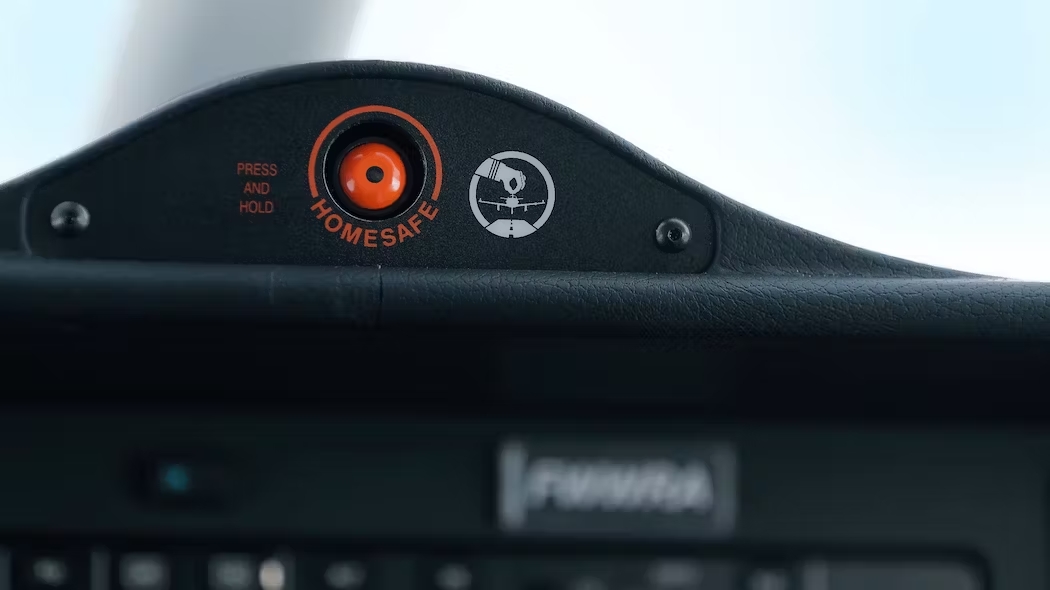
Homesafe, based on Garmin’s award-winning emergency Autoland system, is a game-changing emergency system that automatically brings the airplane to a runway touchdown if the pilot becomes incapcitated. The system is activated manually by an easily recognizable orange button atop the cockpit instrument panel. Its software integrates weather and terrain information to select the best airport for landing, taking into account fuel range and runway length.
The system provides inputs to the aircraft’s flight controls and adjusts engine power settings throughout the touchdown phase. It will activate the brakes on roll-out and shut down the engine after a full stop. The pilot can override the Autoland function at any time to resume normal flight conditions by simply disconnecting the autopilot

The In-Flight Ice Detection Advisory System is a new feature that operates as a backup in the event that the pilot fails to identify icing conditions or ice accretion.
An ice detector based on frequency variations located at the top of the fin triggers the ice protection systems when icing conditions are detected if the pilot fails to identify icing conditions or ice accretion. When activated the system automatically arms the following systems: wings and tailplane pneumatic de-icing boots, propeller and electric de-icing, windshield electric de-icing, inertial particle separator.

The simplfied planum’’s 40% larger intake frees up airflow, giving an 80 hp (60 kW) boost for the same fuel flow and shortening the take-off roll by 20%.

In 2014, the exhaust system of the TBM underwent a redesign in order to operate more efficiently, maximizing airflow through the engine and improving performance at higher altitudes. Compared to previous TBM exhaust systems, the redesigned system in newer TBM models offers optimized engine airflow, reduced drag. and improved residual thrust.

The TBM's engine is a dependable Pratt & Whitney Canada PT6A engine. Its reliable design provides simple maintenance, efficiency, and low operating costs and has one of the largest support networks available. The PT6A is regarded as one of the most dependable powerplants ever created, based on years of regional airliner and commercial operations with over 43,000 engines (covering over 350 million flying hours).
The PT6A-66D model used on the TBM 900 has a thermodynamic rating of 1,825 horsepower and a flat-rated output of 850 shaft horsepower, making it one of the most powerful PT6A engines ever manufactured.

This milled aluminum substructure pilot door simplifies lives by eliminating the need to open and close the huge main passenger door before traveling across the cabin to reach the front seats.
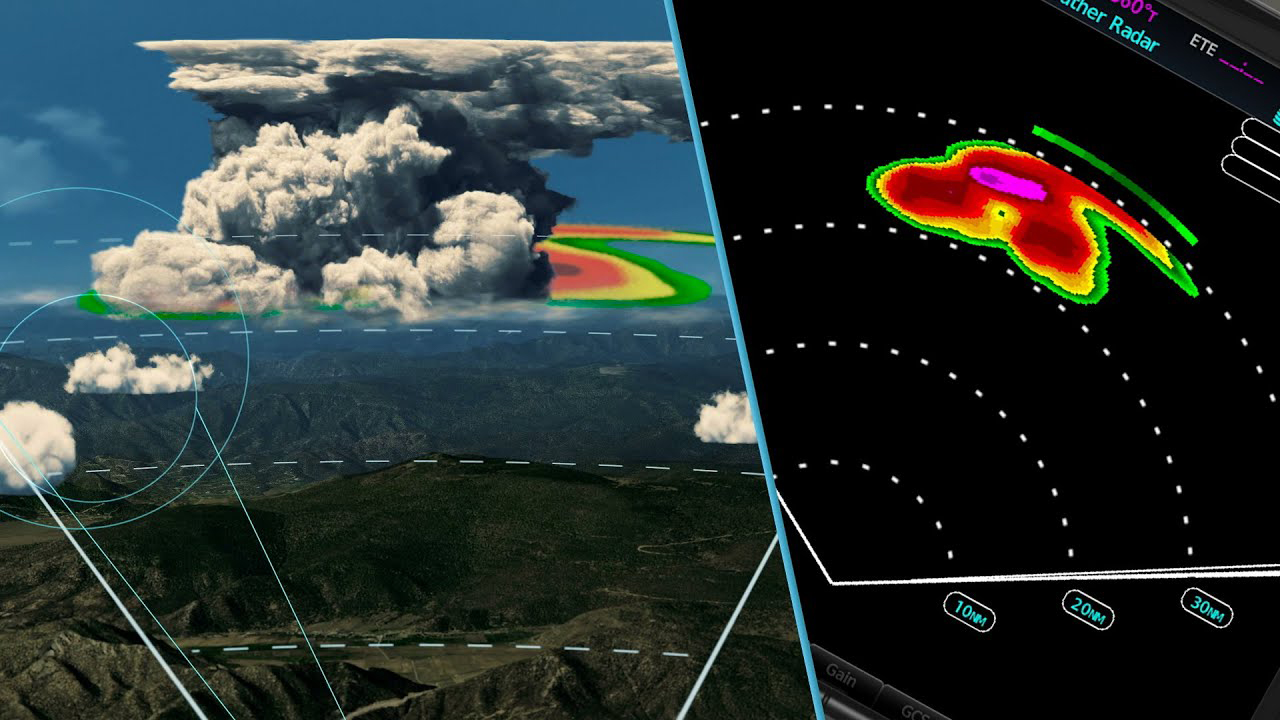
The GWX-75R is a fully digital and highly intuitive radar with advanced technology that gives pilots the ability to depict weather with a much greater degree of detail while exerting much less effort. The GWX-75R offers a high-definition color palette with up to 4 times more colors than traditional radar with detailed contouring of storm cells, full antenna stabilization w ith horizontal scan angles up to 120 degrees, optional turbulence detection and ground clutter suppression, and a real-time depiction of geographical features to aid in visual navigation via the ground mapping mode. The GWX-75R is a state-of-the art weather radar that offers advanced features both technologically and visually. It is substantially easier to operate and far more reliable than magnetron-based radars. The upgraded features and functionality of the GWX-75R allows pilots to intuitively assess in-flight weather like a pro.

The new wingtips give the TBM 900 a distinct new appearance, and when coupled with aerodynamic improvements to the ailerons, vertical stabilizer, and new inner gear doors, they significantly reduce drag while improving flying performance at low speed and high angle of attack.

Computational Fluid Dynamics (CFD) analysis of the airflow over the previous TBM airframe revealed a significant amount of turbulence in the area of the gear doors. The TBM 900 adds an inner gear door, which reduced turbulence and improves its aerodynamic efficiency.

The TBM 900 tail cone has been redesigned to be more aerodynamic, hence lowering drag and enhancing airframe performance. Socata added an additional light to the tip of the aircraft's tail in order to increase nighttime visibility. This enhances the TBM900's visibility to other aircraft in low-light circumstances by enhancing the illumination around the TBM900.
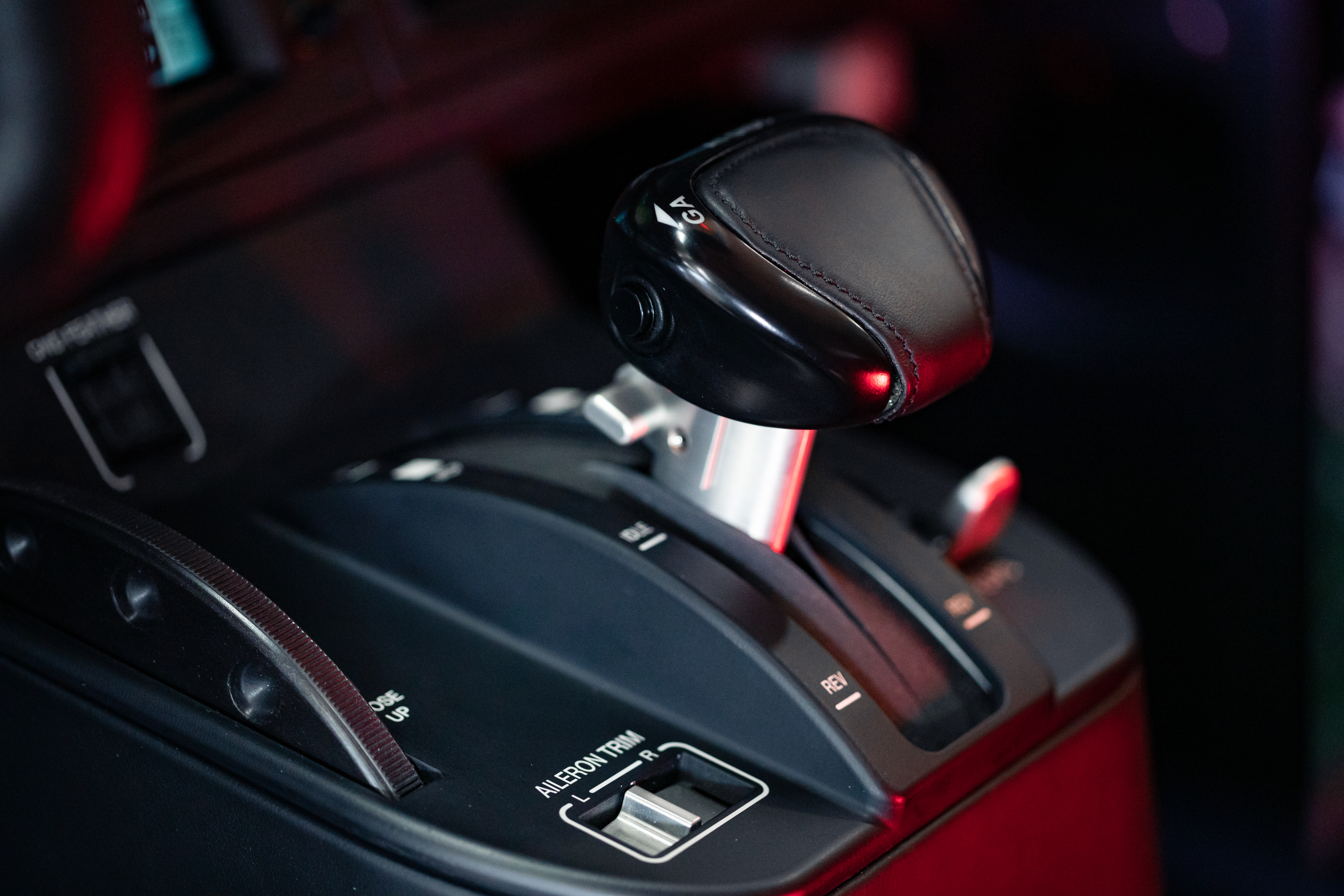
The autothrottle encompassed in the TBM is the first ever automated throttle installed on a production turboprop aircraft in the TBM weight category. The autothrottle integrated system integrates the engine power control and monitoring. Fully-integrated with the autopilot and linked to a smart engine gauge on the Garmin G3000 integrated flight deck, this single power lever can be used from climb-out to landing approach. During the climb phase. the pilot no longer needs to continuously adjust the throttle to reach the optimum torque. Climb to cruise transitions as well as setting with inertial separator activated are anticipated and smoothed by the autothrottle system. It also optimizes the cruise, adjusting automatically to the mode selected or to the active user’s profile settings.

A single, ergonomically designed lever controls engine power, propeller and engine condition. In addition, its new backlit power center allows the TBM930 to start almost twice fast as its predecessors and automatic starter cutoff which reduces pilot workload during the startup sequence.

Garmin’s G3000 digital avionics suite is the first-ever touchscreen-controlled, all-glass flight deck designed for light turbine aircraft. Powered by a state-of-the art processor, the G3000 offers a faster start-up than its predecessor. Three 12-inch ultra-high-resolution displays (1920 x 1200 pixels) provide enhanced perspective view of terrain features, obstacles and traffic - all shown in relative proximity to the aircraft.
The displays’ split-screen functionality enables separate vertical pages to be viewed side-by-side, helping the pilot manage screens by priority that best suits each phase of flight. The G3000’s graphical synoptics for airframe, electrical, and fuel systems offer easy monitoring and faster troubleshooting. Higher-resolution displays allow enhanced viewing and management of multiple sensor inputs - thus making the multi-functional display even more multifunctional.

Homesafe, based on Garmin’s award-winning emergency Autoland system, is a game-changing emergency system that automatically brings the airplane to a runway touchdown if the pilot becomes incapcitated. The system is activated manually by an easily recognizable orange button atop the cockpit instrument panel. Its software integrates weather and terrain information to select the best airport for landing, taking into account fuel range and runway length.
The system provides inputs to the aircraft’s flight controls and adjusts engine power settings throughout the touchdown phase. It will activate the brakes on roll-out and shut down the engine after a full stop. The pilot can override the Autoland function at any time to resume normal flight conditions by simply disconnecting the autopilot.

Garmin’s G3000 digital avionics suite is the first-ever touchscreen-controlled, all-glass flight deck designed for light turbine aircraft. Powered by a state-of-the art processor, the G3000 offers a faster start-up than its predecessor. Three 12-inch ultra-high-resolution displays (1920 x 1200 pixels) provide enhanced perspective view of terrain features, obstacles and traffic - all shown in relative proximity to the aircraft.
The displays’ split-screen functionality enables separate vertical pages to be viewed side-by-side, helping the pilot manage screens by priority that best suits each phase of flight. The G3000’s graphical synoptics for airframe, electrical, and fuel systems offer easy monitoring and faster troubleshooting. Higher-resolution displays allow enhanced viewing and management of multiple sensor inputs - thus making the multi-functional display even more multifunctional.

A single, ergonomically designed lever controls engine power, propeller and engine condition. In addition, its new backlit power center allows the TBM930 to start almost twice fast as its predecessors and automatic starter cutoff which reduces pilot workload during the startup sequence.

The five-blade Raptor composite propeller, built by Hartzell Propeller, is fully integrated into the propulsion system. It has been specifically designed to reduce overall weight and improve the TBM-960s takeoff distance, climb, and cruise speed. Turning at 1,925 rpm during maximum power output, the Raptor contributes to limiting noise and vibration. Its sound level during takeoff is just 76.4 decibels, meeting the most stringent international noise standards. This makes the TBM-960 a “smooth operator” wherever it flies, maintaining the low-profile footprint of Daher’s TBM family.

The In-Flight Ice Detection Advisory System is a new feature that operates as a backup in the event that the pilot fails to identify icing conditions or ice accretion.
An ice detector based on frequency variations located at the top of the fin triggers the ice protection systems when icing conditions are detected if the pilot fails to identify icing conditions or ice accretion. When activated the system automatically arms the following systems: wings and tailplane pneumatic de-icing boots, propeller and electric de-icing, windshield electric de-icing, inertial particle separator.
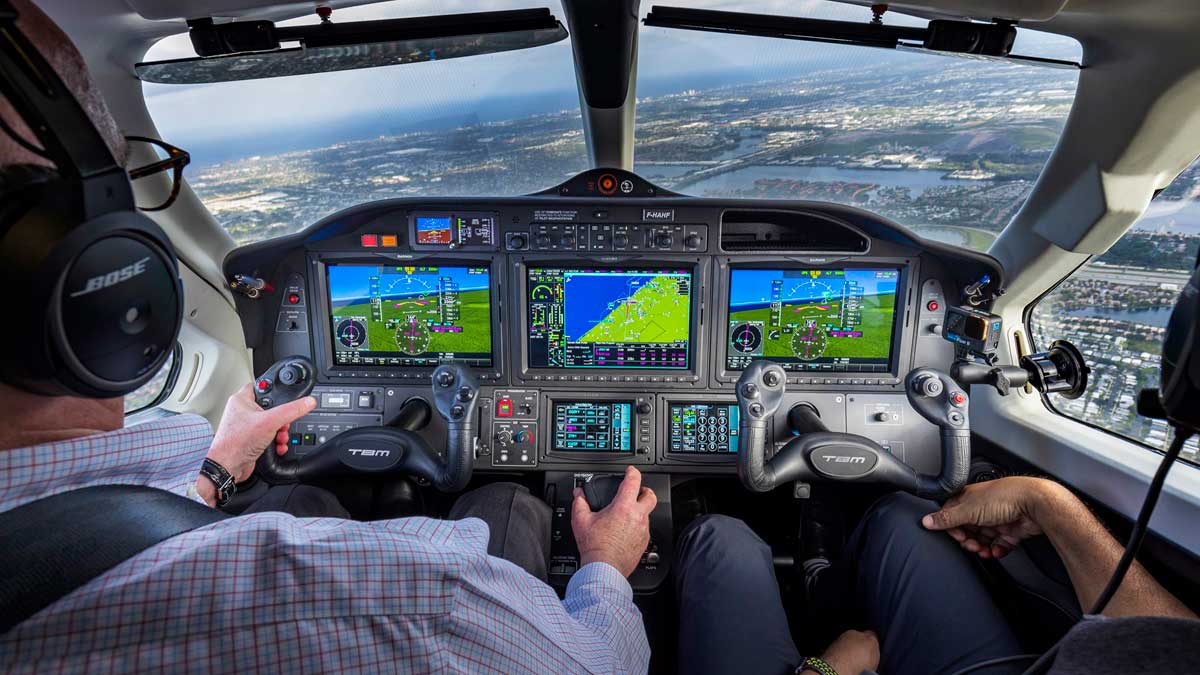
From the propeller to its turbine parameters, the PT6E-66XT’s control is provided by a master system: the Engine and Propeller Electronic Control System (EPECS). This optimizes the powerplant’s performance throughout the flight envelope while reducing pilot workload by integrating all functions and protecting the engines life. Features include easier engine power management and parameter analysis.
The power lever is now an e-throttle, using a single forward position from takeoff to landing - with the EPECS optimizing the power settings and automatically monitoring turbine temperature limits. Additionally, the Fuel Control Unit (FCU) and Propeller Control Unit (PCU) are now electromechanical (instead of hydromechanical), managing engine parameters based on settings defined by the EPECS.
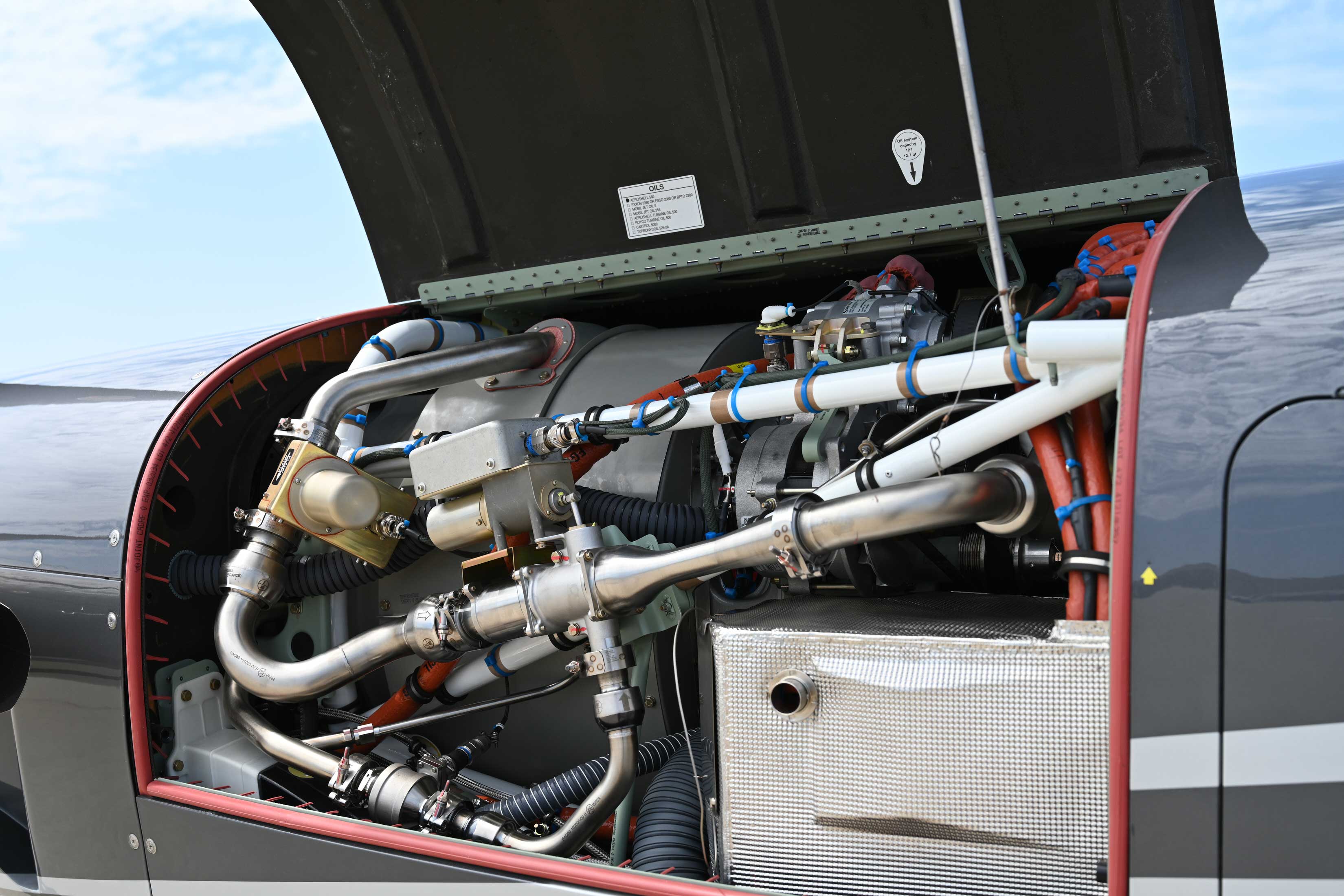
The TBM-960 is equipped with the PT6E-66XT turboprop engine, which is Pratt & Whitney Canada’s latest addition to the iconic PT6 family. The powerplants simple design offers easy maintenance, efficiency, low operational costs, and is covered by one of the industry’s most extensive support networks. It raises the bar in terms of engine performance, control systems, data intelligence, and service solutions.
The PT6E-66XT has a thermodynamic rating of 1,844 hp, making it one of the most powerful engines in the PT6 family, offering a nominal power of 850 shp. Additionally, the TBO has increased from 3,500 hours to 5,000 hours.
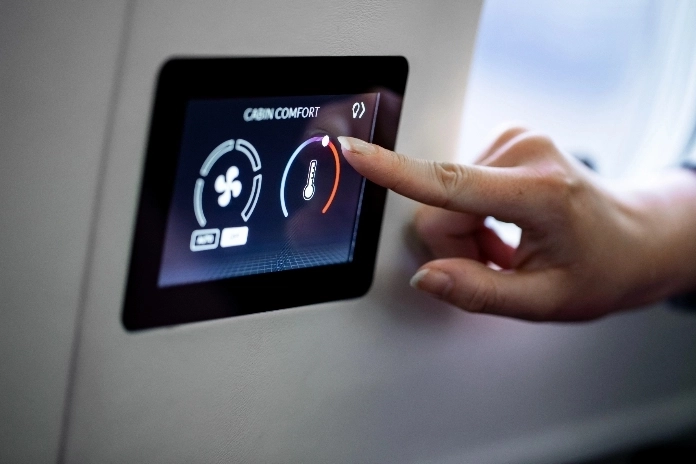
The TBM-960’s prestige cabin features a powerful environmental control system. This innovative feature combined with superior cabin thermal and sound proofing offers improved comfort for all passengers on board.
The passenger cabin zone’s temperature is easily managed with a touchscreen controller, complemented by individual electrically-heated seats, with the occupants being able to choose whether to utilize the heating, and select either light or moderate heat settings.

A new feature within the TBM family includes the addition of the Prestige cabin’s ambient lighting. Passengers control the cabin’s ambient lighting during the day via electronically dimmable windows. At night however, LED light strips which are integrated into the cabin’s overhead ceiling panel provide general illumination, complemented by individual reading lights.

The GWX-8000 radar system reduces pilot workload by providing an automated clear representation of weather by using an enhanced color palette now offering 16 colors, 3D volumetric scanning, hail and lightning prediction, advanced ground clutter suppression, and optional predictive wind shear detection. The GWX 8000 StormOptix weather radar provides pilots with a complete picture of weather while eliminating the requirement to manually adjust the radar, resulting in easier weather interpretation and a more simplified operation.
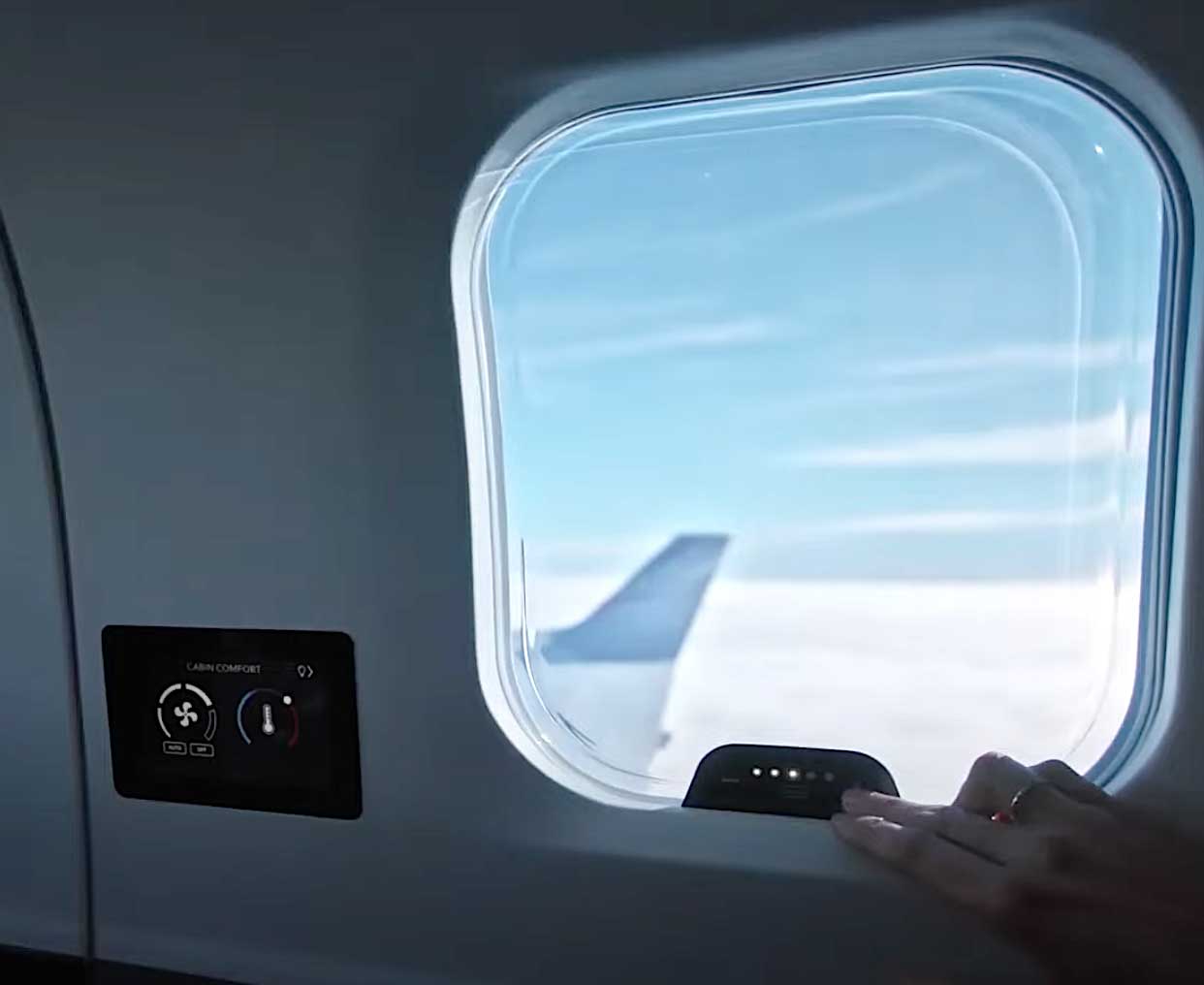
Manual window shades have been replaced with the addition of electronically controlled dimmable windows with variable shading. The windows can be managed with individual control for all windows simultaneously. Additionally, the windows can be turned dark to protect the cabin from heat and sunlight.
.......
.......
.......
.......
.......
.......
.......
.......
.......
.......
.......
.......
.......
.......
.......
.......
.......
.......
.......
.......
.......
.......
.......
.......
.......
.......
.......
.......
.......
.......
© Avexaviation. All Rights Reserved.
Designed and Developed by MISPL
